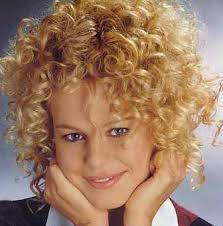matter is not ancient but it does show that some people will collect
and loot anything(this guy also looted ancient American Indian sites
too).
67 Bodies Secretly Exhumed From NM Grave
Published: 4/8/08, 11:05 PM EDT
By MELANIE DABOVICH
ALBUQUERQUE, N.M. (AP) - Working in secret, federal archaeologists
have dug up the remains of dozens of soldiers and children near a
Civil War-era fort after an informant tipped them off about
widespread grave-looting.
The exhumations, conducted from August to October, removed 67
skeletons from the parched desert soil around Fort Craig - 39 men,
two women and 26 infants and children, according to two federal
archaeologists who helped with the dig.
They also found scores of empty graves and determined 20 had been
looted.
The government kept its exhumation of the unmarked cemetery near the
historic New Mexico fort out of the public's eye for months to
prevent more thefts.
The investigation began with a tip about an amateur historian who had
displayed the mummified remains of a black soldier, draped in a Civil
War-era uniform, in his house.
Investigators say the historian, Dee Brecheisen, may have been a
prolific looter who spotted historical sites from his plane.
Brecheisen died in 2004 and although it was not clear whether the
looting continued after his death, authorities exhumed the
unprotected site to prevent future thefts.
"As an archaeologist, you want to leave a site in place for
preservation ... but we couldn't do that because it could be looted
again," Jeffery Hanson, of the Bureau of Reclamation, told The
Associated Press.
The remains are being studied by Bureau of Reclamation scientists,
who are piecing together information on their identities. They will
eventually be reburied at other national cemeteries.
Most of the men are believed to have been soldiers - Fort Craig
protected settlers in the West from American Indian raids and played
a role in the Civil War. Union troops stationed there fought the
Confederacy as it moved into New Mexico from Texas in 1862.
The children buried there may have been local residents treated by
doctors at the former frontier outpost, officials said.
Federal officials learned of the looting in November 2004, when Don
Alberts, a retired historian for Kirtland Air Force Base, tipped them
off about a macabre possession he'd seen at Brecheisen's home about
30 years earlier.
Alberts described seeing the mummified remains of a black soldier
with patches of brown flesh clinging to facial bones and curly hair
on top of its skull. Alberts said the body had come from Fort Craig.
"The first thing we did was laughed because who would believe such a
story," Hanson said. "But then we quickly decided we better go down
and check it out."
Weeks later, Hanson and fellow archaeologist Mark Hungerford surveyed
the cemetery site and found numerous holes - evidence of unauthorized
digging.
While records show the cemetery had been disinterred twice by the
Army in the late 1800s, it wasn't known how many bodies remained.
Hanson said ground-penetrating radar revealed the Army left behind
about one-third of the bodies.
A lack of funding and various federal procedures delayed the
excavation until last summer.
Brecheisen's son told authorities where the mummified remains from
his father's home were, and a person who hasn't been publicly
identified handed them over - including a more-than-century-old skull
packaged in a brown paper bag. Alberts said that skull, which still
had hair attached, was the one he'd seen years earlier.
Authorities also found some Civil War and American Indian artifacts
in Brecheisen's home, but the display rooms that showcased
Brecheisen's collections had already been emptied out and auctioned
off by his family after his death, Hanson said.
Investigators believe Brecheisen did most of his looting alone, but
they also know he dug with close friends and family at the Fort Craig
site. Some who accompanied him led authorities to the grave sites,
Hanson said.
Brecheisen was a decorated Vietnam veteran and flew for the Air
National Guard during a 26-year military career. His family described
him as "one of the state's foremost preservationists of historical
facts and sites" in his obituary.
Those close to Brecheisen said his looting may have been motivated by
anger toward the Bureau of Land Management, but no further details
were available. Alberts described him as a collector; it wasn't clear
whether Brecheisen sold any of the items.
Investigators believe he also dug up grave sites in Fort Thorn and
Fort Conrad in southern New Mexico as well as prehistoric American
Indian burial sites in the Four Corners region.
Hungerford said they also believe he may have taken the Fort Craig
burial plot map, which is missing from the National Archives.
The criminal case against Brecheisen was closed upon his death and
there are no plans to investigate his family members, assistant U.S.
Attorney Mary McCulloch said.
Alberts said he asked Brecheisen to come clean.
"I had urged him to simply return the remains, about 10, 15 years
before he got ill. I offered to act as an honest broker to the deal
and see that they were returned, but I didn't get a response,"
Alberts said. "I didn't want to get a friend in trouble."
He added: "But you look back and think you would have done everything
differently if you would have known everything was going to
disappear."
------------------------------------
Yahoo! Groups Links
<*> To visit your group on the web, go to:
http://groups.yahoo.com/group/Ancientartifacts/
<*> Your email settings:
Individual Email | Traditional
<*> To change settings online go to:
http://groups.yahoo.com/group/Ancientartifacts/join
(Yahoo! ID required)
<*> To change settings via email:
mailto:Ancientartifacts-digest@yahoogroups.com
mailto:Ancientartifacts-fullfeatured@yahoogroups.com
<*> To unsubscribe from this group, send an email to:
Ancientartifacts-unsubscribe@yahoogroups.com
<*> Your use of Yahoo! Groups is subject to:
